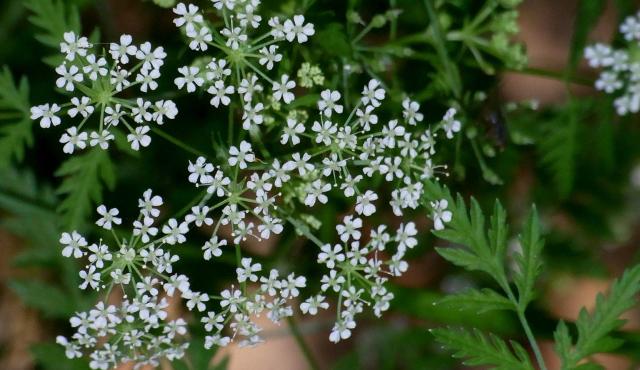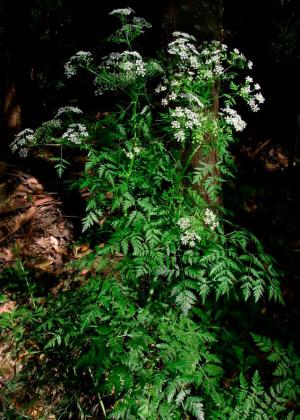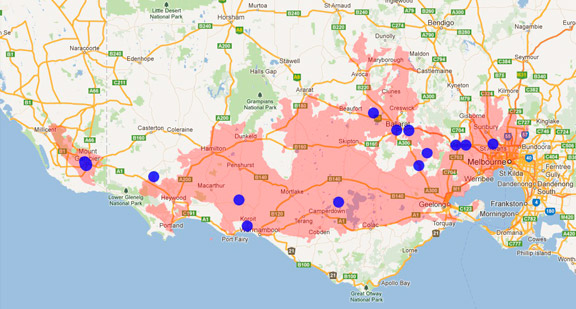A range of teacher professional learning programs will be developed to accompany the Biodiversity of the Western Volcanic Plains online outreach...


Hemlock
Conium maculatum
Perennial. This plant resembles Fennel Foeniculum vulgare however should not be handled without gloves and should not be collected as food. Common in damp areas near drains and creeks.
| Details | Description |
| Type | Herb |
| Group | Parsley |
| Identifying Characteristics | |
| Distinctive Features | Hollow stems with reddish purple spots at the base. |
| Life Form Group | Herb |
| Life Form Codes | Large Herb (LH) |
| EVC types | EVC 68: Creekline Grassy Woodland |
| Native Status | Introduced |
| Weed Status Invasiveness | High INVASIVE |
| Weed Status Impact | High IMPACT |
| Taxonomy | |
| Phylum | Charophyta |
| Class | Equisetopsida |
| Order | Apiales |
| Family | Apiaceae |
| Genus | Conium |
| Species | maculatum |

Distribution maps indicate current and historic locations where species have been sighted.
Source: Atlas of Living Australia
| Endangered Status | |
| DEPI Advisory List | Not listed |
| FFG Act | Not listed |
| EPBC Act | Not listed |
The conservation status of species is listed within Victoria and Australia.
The Department of Environment and Primary Industry (DEPI) Advisory List consists of non-statutory advisory lists of rare or threatened flora and fauna within Victoria.
The Flora and Fauna Guarantee Act 1988 (FFG Act) lists threatened species in Victoria. Under the Act, an Action Statement is produced for each listed species.
The Environment Protection and Biodiversity Conservation Act 1999 (EPBC Act) is the Australian Government’s key piece of environmental legislation, listing nationally threatened native species and ecological communities.



